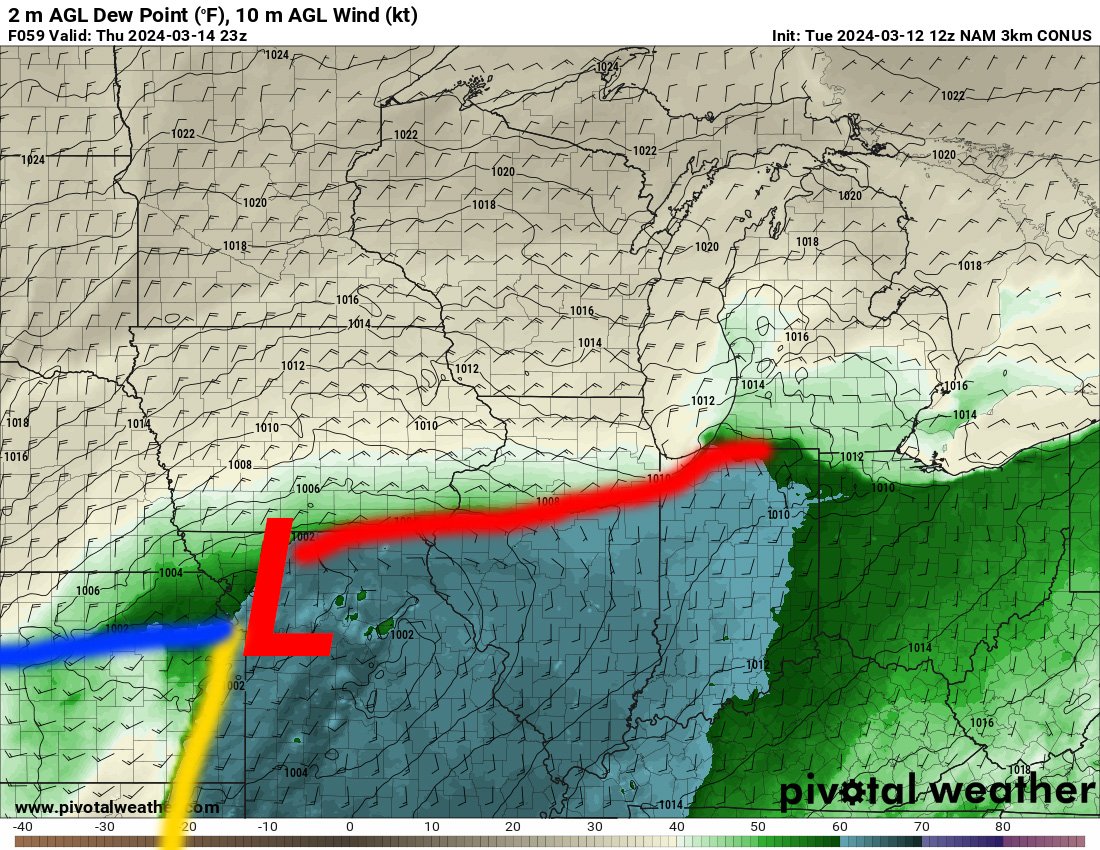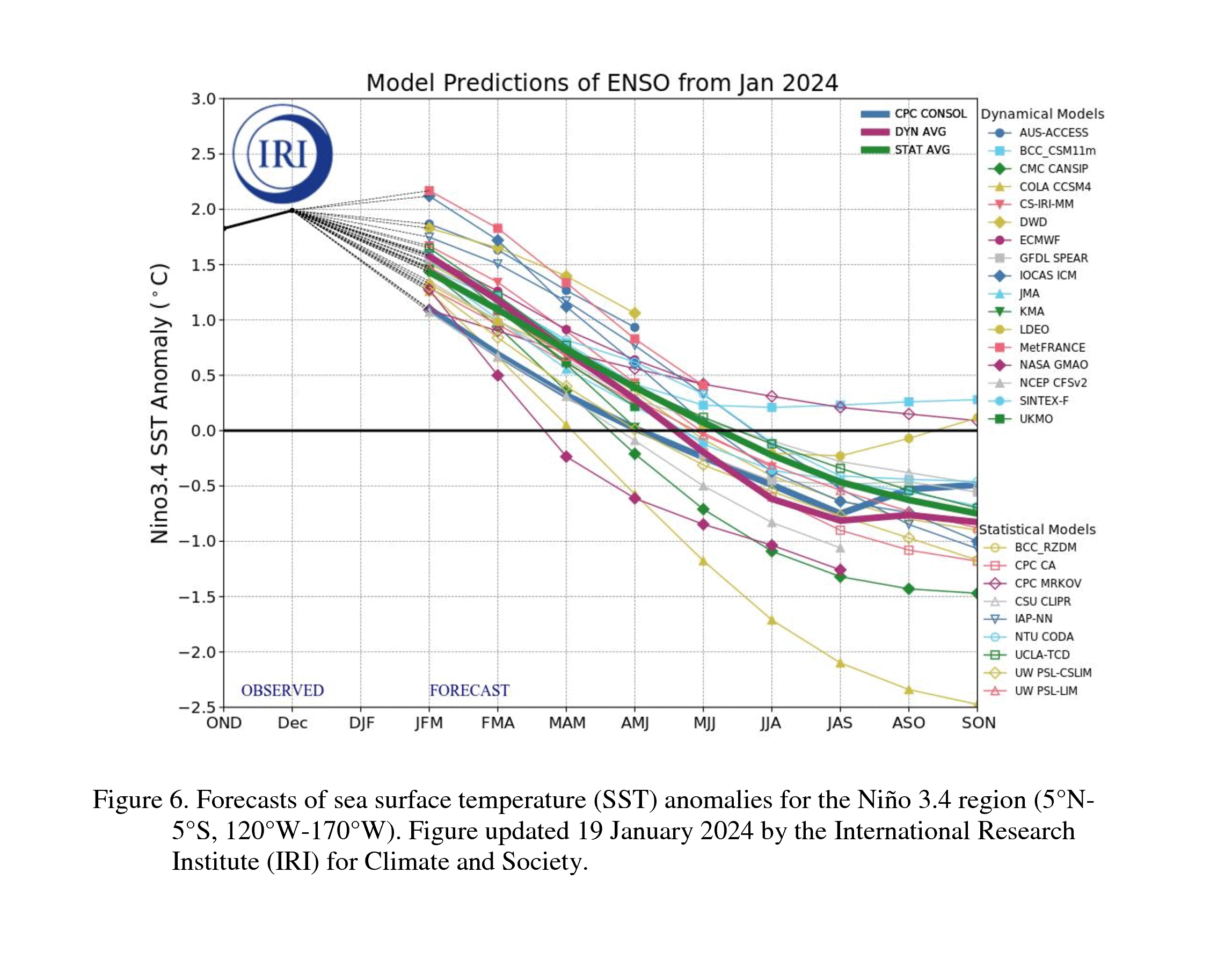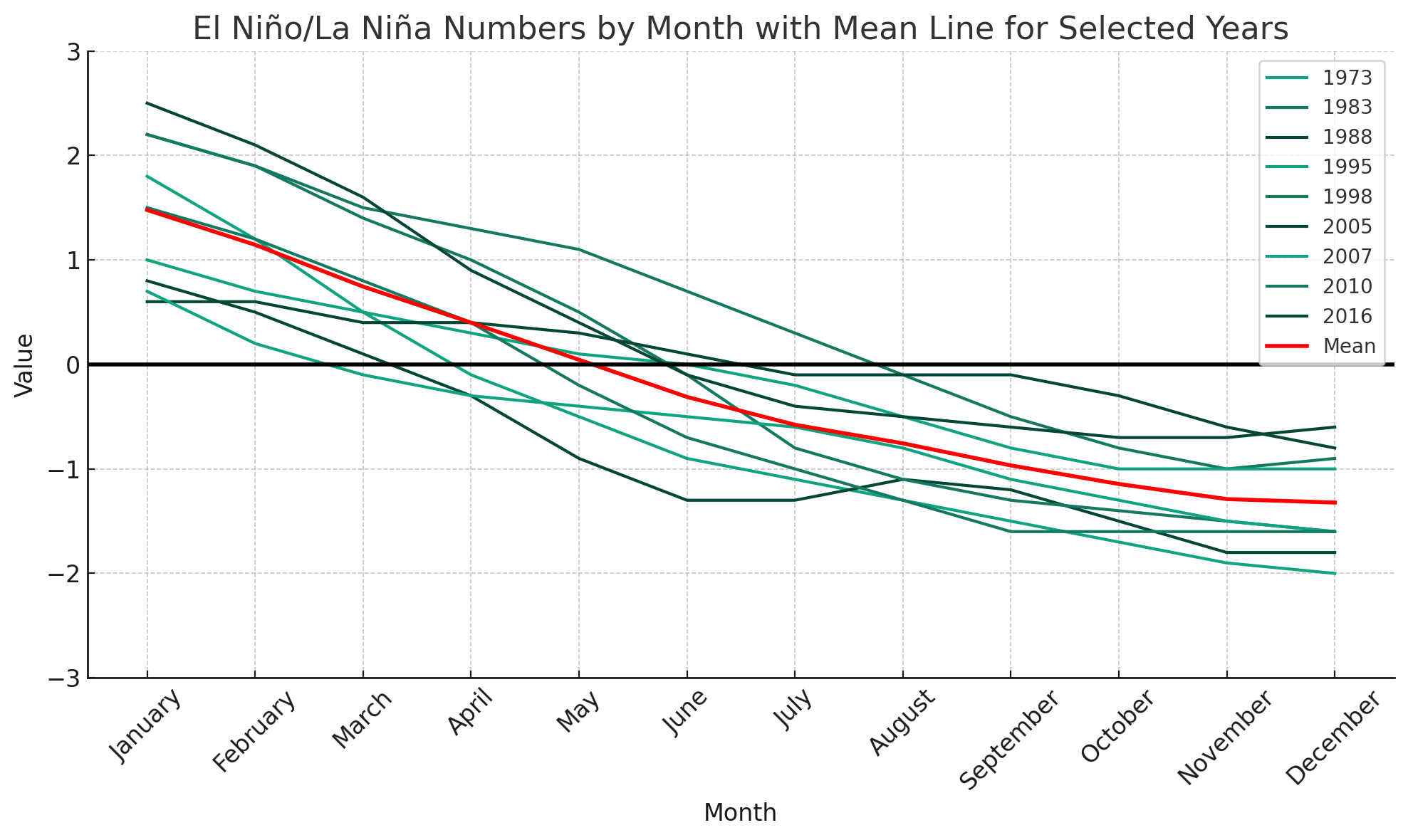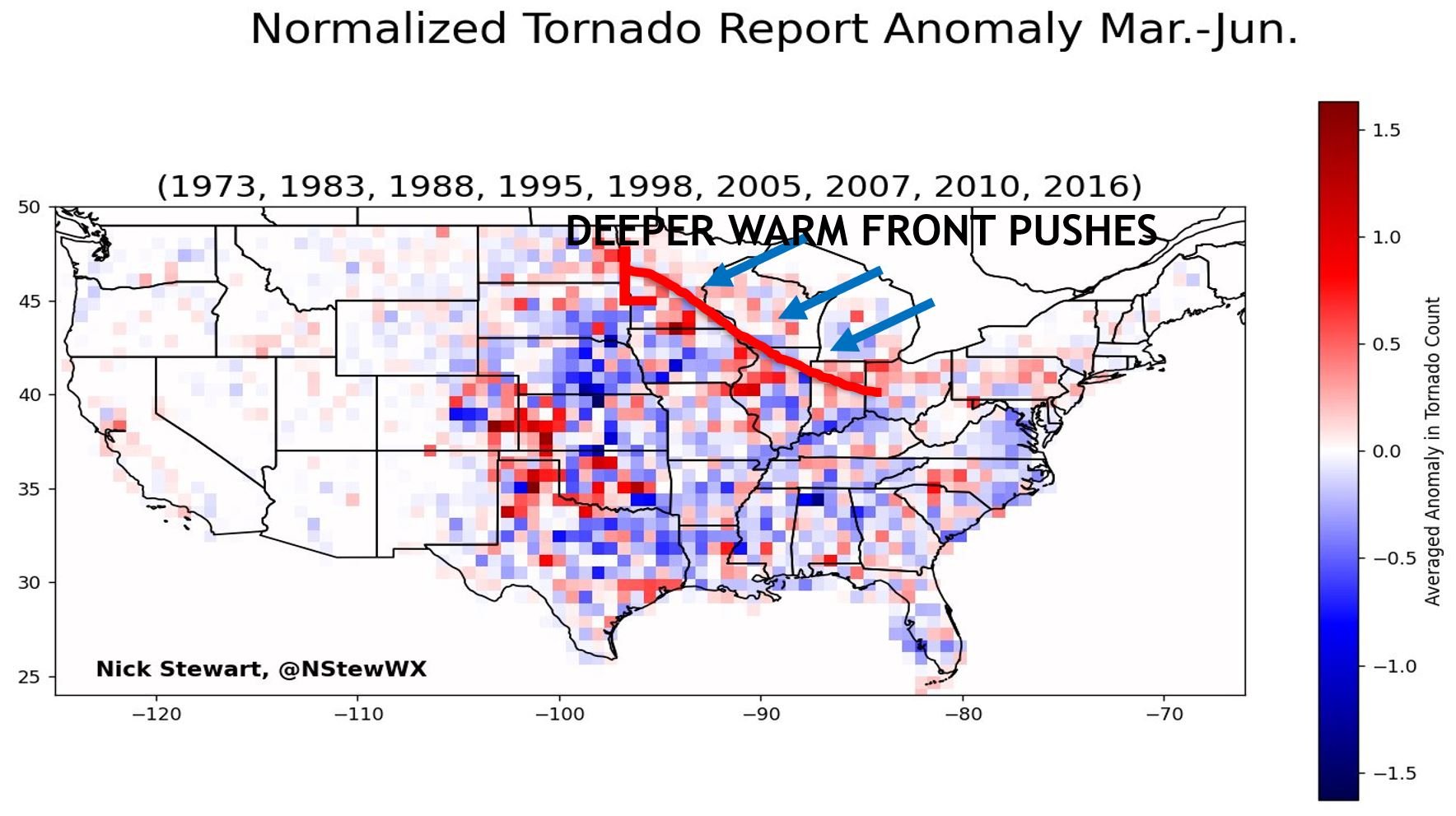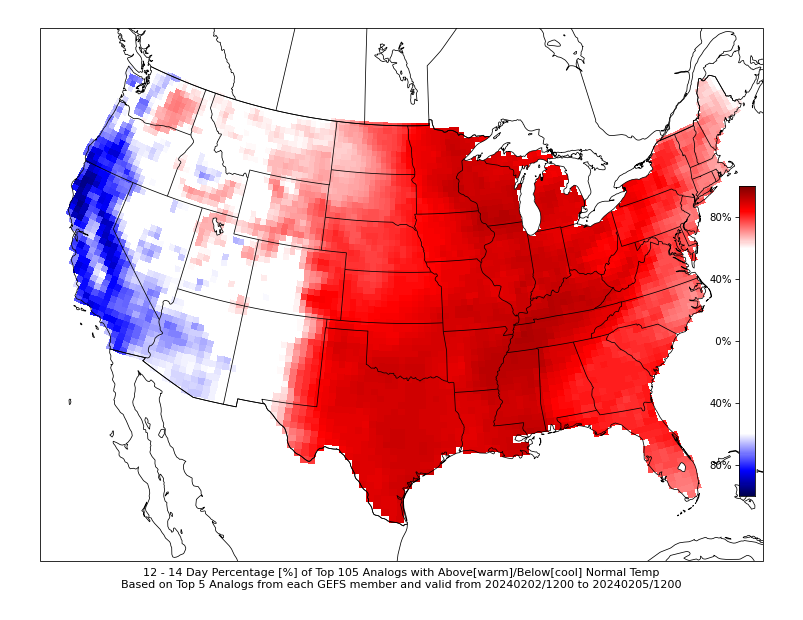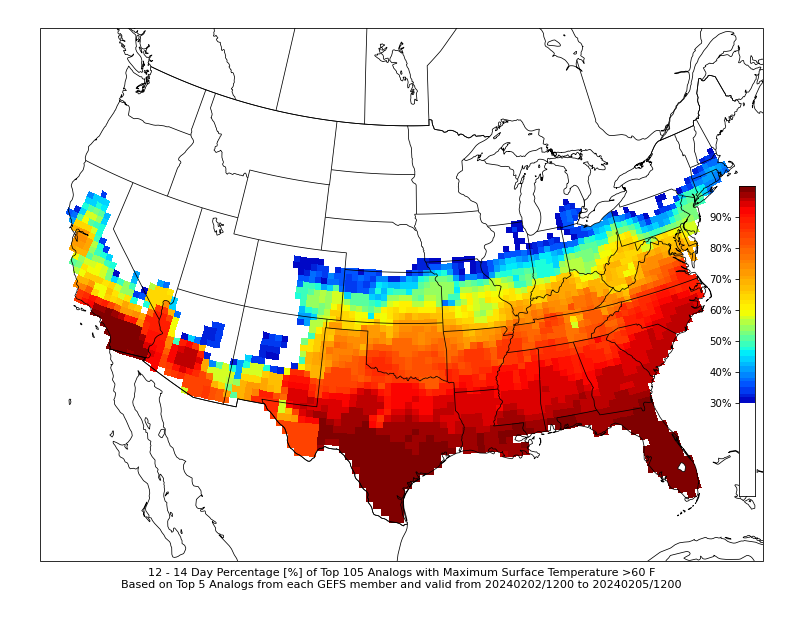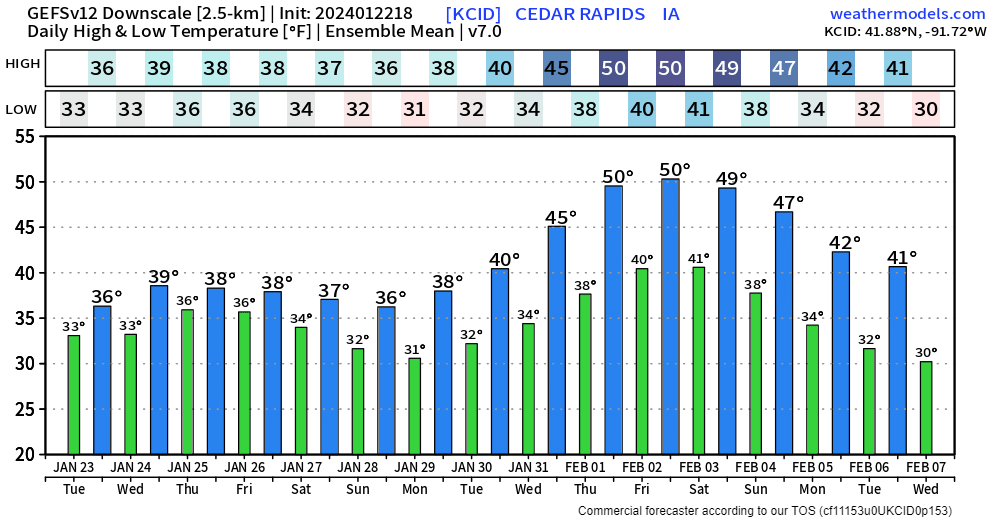Spring-like temperatures are building in the central US this week, and soon that will lead to spring-like storms from the Upper Midwest to the Southern Plains. The Storm Prediction Center has already issued a Level 2 of 5 risk, a Slight Risk, for Wednesday and Thursday.
Wednesday, storms are forecast to develop rather late in the day. Most of the activity may actually be overnight around the Missouri Valley area from southeast Nebraska through central Missouri. While there is a limited tornado threat, that would wind down drastically after sunset and a large hail threat will take priority.
Hail is especially likely areas along and north of a warm front pushing through the central US Wednesday and Thursday with elevated storms. These elevated hailers could produce hail large than golf balls with the strongest cores.
North American Model forecast for Wednesday.
Global Forecast System forecast for Thursday
Thursday is when things get rather interesting in the Central US. Models differ on the placement of key boundaries including a Warm Front, Dryline and Cold Front. While they may differ 50-75 miles north to south in location, the general idea is about the same.
A tornado threat becomes more pronounced Thursday near the triple point of the Warm Front, Low and Cold Front/Dryline, and this will likely pass through northern Missouri into southern Iowa.
Dewpoints are forecast to reach near 60, which is favorable for severe weather this time of year. The quality of this moisture is one potential limiting factor for the overall severe threat.
Lake Michigan water temperatures
With a strengthening low over the Central Plains, strong easterly winds will develop ahead of it. This wind will cross over the Great Lakes influencing air temperatures. As of Tuesday morning, water temperatures of southern Lake Michigan were in the upper 30s. This will help keep that warm front from surging north.
Given this, I like the idea of the NAM’s more southern placement of the warm front near the Iowa/Missouri border unlike some models pushing it even farther north forwards central/northern Iowa.
NAM forecast Thursday at 6 p.m.
The NAM fires storms by 5-6 p.m. across the Mid-Mississippi River valley Thursday, especially across Missouri which again is likely along/south of the warm front.
CAPE/Instability forecast Thursday at 6 p.m.
With dewpoints in the low 60s, instability should be more than sufficient for severe storms. Mixed Layer CAPE values are forecast off the NAM to be in the 2000j/kg range which is enough for March standards.
0-1km Storm Relative Helicity forecast Thursday evening.
Looking at the low-level spin in the atmosphere, right along and south of the warm front storm relative helicity values should be sufficient for rotating storms along/south of the Iowa/Missouri border. The very high values north of this point is north of the warm front, therefore while hail can be a big concern, a tornado threat would be near non-existent. Important caveat, if the warm front pushes farther north though this changes the outlook drastically for southern Iowa.
This will be a multi-faceted severe weather event this week, and one of the first true spring severe events of the season.
Storm Chase target
If I was storm chasing the above region would be my target area Thursday. Again, while severe weather including large hail and damaging wind could extend up through central Iowa, I think as of this morning’s model guidance the best chance for a tornado would be in southeast Iowa into northeast Missouri.
We get more high-resolution models tonight which should give us a clearer view of the developing severe threat.
-Meteorologist Nick Stewart


